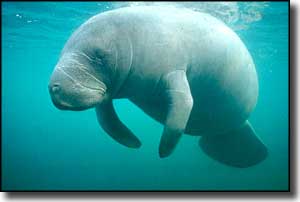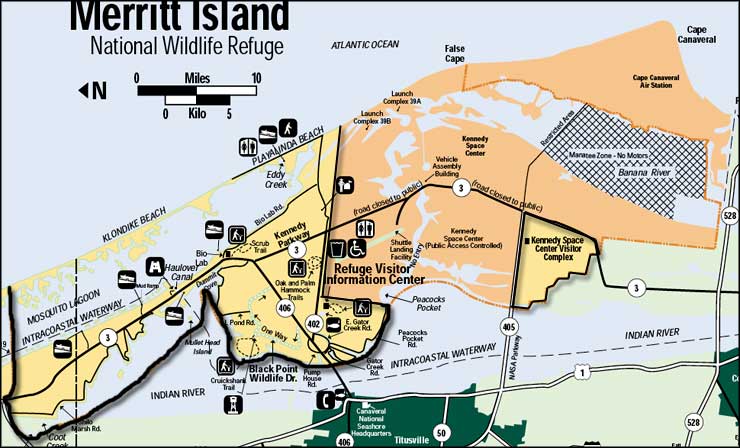Merritt Island National Wildlife Refuge

Wading birds feeding in one of the lagoons at Merritt Island National Wildlife Refuge

Merritt Island National Wildlife Refuge is actually an overlay on the John F. Kennedy Space Center at Cape Canaveral. NASA only developed certain areas of the property, so in 1963, the US Fish & Wildlife Service signed an agreement that established the refuge under their administration. That agreement was amended in 1975 with the establishment of Canaveral National Seashore. Most of the northern 20 miles of the 35-mile-long property are open to the public for certain wildlife-oriented activities. Along the southern boundary is the Kennedy Space Center, which abuts Cape Canaveral Air Force Station to the south. The Indian River and Mosquito Lagoon run through the whole area. Merritt Island NWR is also considered a gateway to the Great Florida Birding Trail. Public access is controlled, and is usually excluded during the times before and during launches from Kennedy Space Center. The Refuge tends to be open only during daylight hours and only certain organized youth organizations are allowed to camp.

Among the 140,000 acres of the Merritt Island National Wildlife Refuge you'll find saltwater marshes and estuaries, freshwater impoundments, coastal sand dunes, hardwood hammocks and pine-covered flatlands. All in all, there are more than 1,500 different species of plants and animals found here, including 21 species that are on the Federal and/or Florida Threatened or Endangered Species List.
The Banana River area inside the boundaries of the Kennedy Space Center is strictly controlled, and no motor boats are allowed because of the numbers of manatees that hang out there. Among the threatened and/or endangered species here, you might see wood storks, roseate terns, southeastern beach mice, West Indian manatees, Kemps Ridley turtle, Atlantic Hawksbill turtle, Green turtle, Leatherback turtle, piping plover, Florida salt marsh snake, eastern indigo snake, Florida scrub jay and American alligator.
There are multiple hiking and driving routes on the Refuge. Near Haulover Canal you'll find an observation tower that looks down on a spot favored by congregating manatees. Boating is usually allowed on the waters surrounding the refuge but speed controls are required because of the presence of the manatees. Fishing is usually permitted but hunting is strictly controlled. The Visitor Center offers exhibits, toilets, maps, books and info.
Merritt Island National Wildlife Refuge is administered as part of the Merritt Island National Wildlife Refuge Complex.

The yellow areas inside the shaded black lines are generally open to the public
Photo of the American Avocet courtesy of Joel Reynolds, US Fish & Wildlife Service
Photo of the manatee at Merritt Island courtesy of Mary Beth Seibert, via Byways.org
Map of Merritt Island NWR courtesy of the US Fish & Wildlife Service